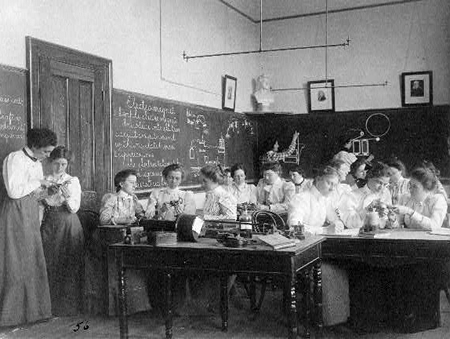A Long Way, Baby? Maybe.

Just in time for Women’s History Month, the White House issued its first report on the status of American women since the Eleanor Roosevelt Commission prepared one for the Kennedy administration. As Gail Collins noted in her March 3 New York Times column, the survey is full of revealing tidbits–many of them culled from Census and Bureau of Labor Statistics studies.
“Women in America: Indicators of Social and Economic Well-Being” indicates just how far females have come in the intervening five decades. The only skirts in JFK’s White House were typists; when the all-male list of top appointees was released, Mrs. Roosevelt told reporters that “men have to be reminded that women exist.” Today, America has a female Secretary of State, among other cabinet posts. Men still outearn women, $1 to 75 cents on average. However, young women are more likely to have a college or master’s degrees than their male counterparts, and depending on the area of the country, and the discipline, they enjoy something akin to salary parity.
The wage gap in the District of Columbia, for example, was minimal, with women earning on average 96.5 percent of what men did in 2009, according to the Bureau of Labor Statistics. By contrast, Louisiana women made 65 cents to the male dollar. A separate BLS report found that women in food services out-earn men by 10 percent (oh, waiter!), while men earn a third more in retail. Fields such as computer science and engineering not only are lucrative, they enjoy some of the narrowest pay gaps between men and women. (Computer software engineers earned the third highest weekly salary, just behind lawyers and pharmacists, and slightly ahead of physicians.) However, the White House report notes, only 7 percent of women in 2009 were employed in high-paying computer and engineering fields, compared with 38 percent of men.
Filed under: K-12 Education News








